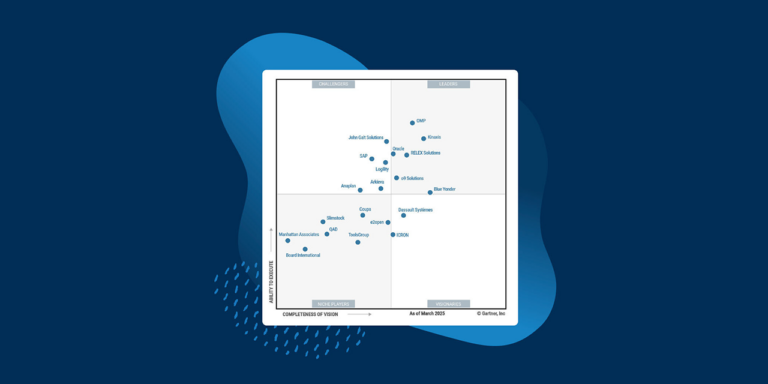How mathematical optimization unlocks profits in the poultry supply chain
Mar 18, 2024 • 6 min
When maximizing profitability, what works in broader manufacturing doesn’t always fly in the poultry industry. An array of challenges complicate poultry manufacturing, from feed costs and disease management to matters of regulatory compliance and beyond.
One prominent example is standard costing. Some industries can afford to make sales decisions based on gross profit figures derived from standard cost accounting. However, poultry producers face challenges that transcend the planning method’s limits, including complexities involving product mix optimization, resource utilization and inventory, and carcass balancing.
The poultry supply chain grows more complex with time, so companies can’t afford to make strategic decisions on margin in isolation. Poultry producers must consider the entire end-to-end supply chain and adopt a more demand-driven planning model to maximize long-term profits.
The problem of planning with standard cost
Most manufacturers still root their planning in the traditional “standard cost” model, which emphasizes cost control and production efficiency. Standard costing establishes a predetermined production cost for each individual product based on historical data and estimated future costs, including:
- Direct materials, like feed and chicks
- Labor costs
- Manufacturing overhead
This model highlights discrepancies between expected and actual expenses, providing a foundation for budget forecasting that aids in cost control for businesses concerned with internal cost efficiency. It’s an example of a push-based planning system, where forecasts and projections drive production and inventory decisions rather than actual demand. The idea is to push products towards the customer based on anticipated demand.
Demand-driven models better suit the multi-faceted needs of poultry industry planners.
A push model relies on estimates, which tend to work better in industries with relatively stable demand. But demand for poultry is anything but stable, and a sudden shift away from the initial estimate can result in excess inventory on hand. This reality forces companies to make sub-optimal decisions to avoid spoilage, like freezing products to sell at a lower price instead of chilled at a premium one.
Demand-driven models better suit the multi-faceted needs of poultry industry planners. These models are often called pull models, as orders are pulled through production toward the customer using real-time market data instead of estimates. This data usually includes:
- Buying patterns, like changes in consumer purchasing in response to influences like seasonality or social media trends
- Competitor activities, such as pricing, promotions, and product launches that impact planning decisions
- Retail customer strategies and decisions, especially pertaining to promotions and assortments
- Customer preferences, like trends towards organic or free-range poultry
- Regulatory changes, such as food safety or animal welfare legislation that impacts production costs and pricing strategies
- Supply chain dynamics, like fluctuations in feed or transportation costs to make timely price adjustments to protect profitability
Ultimately, a demand-driven approach delivers more accurate results for poultry producers than standard cost, especially considering that the latter includes fixed costs and doesn’t factor in distribution costs.
It’s time to plan for profit
Supply chain planning for poultry production isn’t for the faint of heart. Companies have tried many methods to tackle their planning challenges, including planning with several systems or relying on previous experience and gut feelings. Experience sometimes helps, but bias often limits teams from considering all the intricacies of the supply chain. And using multiple systems often leads to disconnected planning, rendering it impossible to know whether the right decisions are being made for the entire business.
Because of these challenges, teams often default to planning for sales and volume instead of planning for profit.
Modern supply chain optimization software addresses the significant shortcomings of traditional planning using a supply chain digital twin. This approach creates a digital simulation of a business’s entire supply chain and includes every business constraint, rule, and cost. The tool then uses this model, advanced mathematical calculations, and optimization techniques to determine the most profitable way to meet demand in a feasible, executable way.
A robust optimization solution addresses the significant shortcomings of traditional planning using a supply chain digital twin.
Modern solutions achieve profit optimization through a planning engine that considers every variable supply chain cost component, not just the pre-calculated standard cost. These components include:
- Sourcing of the bird, including oversight and optimization of the bird grow cycle
- Primary processing
- Secondary processing, including deboning and value-adding
- Tertiary processing, like smoking and small goods
- Warehousing and inventory holding
- Distribution
Many planning solutions are rooted in heuristics—rule-based methods emphasizing speed in solving planning problems. However, heuristics-based solutions can’t determine the optimal way to solve a problem and can’t consider the sheer scope and complexity of every poultry supply chain component.
Only through all-encompassing mathematical optimization of the end-to-end production process can a poultry producer attain an accurate picture of the cost side of the profit calculation. Companies can use such end-to-end optimization to drive costs out of the supply chain, improve customer service, and bolster profit margins—all while avoiding price erosion.
How to harness advanced software for profit-optimized decision-making
Poultry producers seeking to maximize profits must take the pivotal leap from traditional planning to profit-driven decision-making. Truly cost-optimized plans require a total accounting of the actual costs of production, which standard costing can’t provide. Companies need a way to transcend the limitations of standard cost models and align their planning more closely with the dynamic nature of the poultry market.
The crux lies in embracing robust planning and optimization software with the transformative power to dissect and analyze every nuance of the supply chain. Optimization software doesn’t just track costs. It delves into the granular details of each process and analyzes the interplay of various factors to uncover profitable opportunities.
Identify actual costs
The journey to profitability in poultry processing begins with a comprehensive approach to cost analysis. Optimization software surpasses traditional cost tracking, delving into the granular details of each supply chain element. This in-depth analysis and optimization factors in all relevant variables to ensure that plans are truly cost-optimized.
For example, the software:
- Scrutinizes feed conversion ratios and adjusts feed formulations, ensuring optimal growth at minimal costs
- Streamlines production processes from hatchery to harvest, optimizing each stage to reduce wastage and improve yield
- Balances inventory levels, ensuring product freshness while reducing holding costs
Adapt to market dynamics
Companies must stay attuned to market dynamics to ensure their planning decisions remain the most profitable in the face of supply and demand shifts. Here, a digital tool becomes an invaluable ally. It offers real-time demand sensing and analysis, continuously monitoring market trends and consumer demands, enabling producers to swiftly pivot production to align with current market appetites.
Companies must stay attuned to market dynamics to ensure their planning decisions remain the most profitable in the face of supply and demand shifts.
The software’s capacity to analyze and respond to the market’s ebb and flow ensures that production strategies are reactive and proactive, aligning closely with the pulse of consumer demand and market conditions. Combining these market insights with competitor data also helps producers gain a competitive edge.
Plan for every scenario
Poultry producers require foresight and preparedness to navigate the uncertainties of the industry. Fortunately, these are areas where optimization software excels. Robust solutions come equipped with predictive analysis capabilities crucial in risk mitigation, identifying potential supply chain disruptions and allowing for proactive measures.
The best solutions also facilitate scenario planning, enabling producers to simulate various market scenarios and foresee the outcomes of different strategies. This level of preparedness and strategic foresight ensures that producers can make informed decisions, choosing paths that lead to profitability while effectively managing potential risks. Scenario planning can help poultry producers better understand the implications of decisions like:
- Introducing new products or discontinuing existing ones
- Adding or removing certain production lines
- Adopting new manufacturing technologies, production methods, or distribution strategies
The ability to help producers prepare for a range of possibilities enables them to make data-driven decisions to navigate challenges more efficiently and capitalize on opportunities more profitably.
The path to demand-driven profit optimization
As the poultry industry navigates through the complexities of market demands and cost pressures, adopting advanced planning and optimization software emerges as the key to unlocking profitability. It’s a shift from playing catch-up with market trends to proactively shaping production strategies that meet and anticipate market demands.
The right optimization software isn’t just a tool. It’s a strategic partner in the quest for profitability, offering clarity, agility, and precision in decision-making. For poultry producers looking to soar in a competitive market, embracing this technology is not just an option — it’s a necessity for sustainable success.




